| |
|
|
| "Other Temples", Angkor Area, Cambodia, Part
Two |
 |
Week 4 21st May 2011 |
| |
|
|
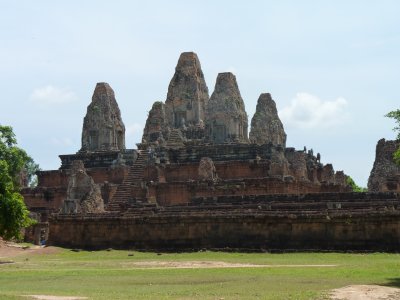 |
|
If you aren't ruined by now you soon will be.
And if you aren't, we are!
This is Pre Rup. Another pyramid. More aching legs.
The laterite (base) and sandstone (top and trim) are reasonably clearly
visible - at least I know where they are. |
| |
|
|
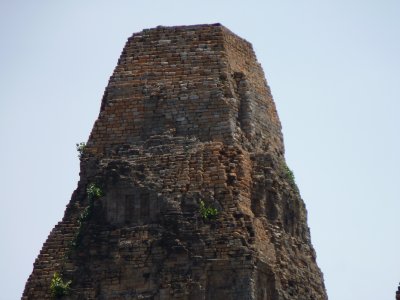 |
|
But just to confuse you, the top is actually brick.
Lost its mortar and trim of course. But what can one expect after a
thousand years. |
| |
|
|
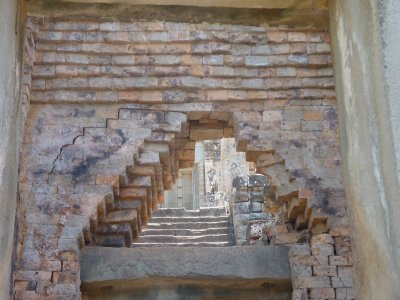 |
|
And even the bricks are corbelled. |
| |
|
|
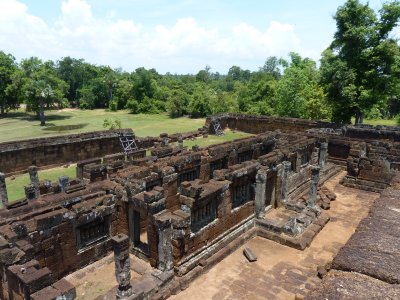 |
|
We made it to the top. Now to get down again.
There's quite a bit of red sand around. Erosion off the laterite.
At some time they'll have to stop the 1 million or so visitors per year
crawling all over it.
|
| |
|
|
 |
|
This is the inside of the top. Quite neat. There's a hole
at the very top. |
| |
|
|
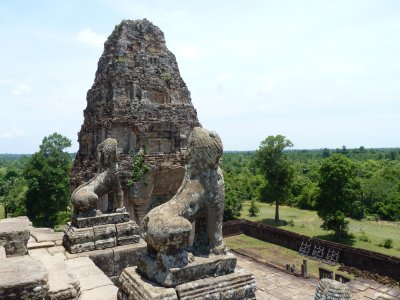 |
|
The "lions" were a bit larger here. Very elegant. |
| |
|
|
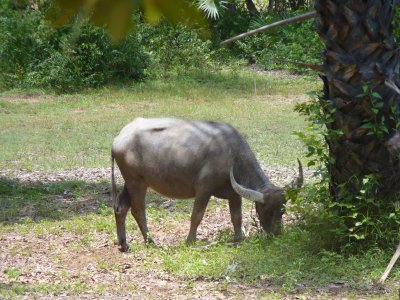 |
|
And wondering around (well tethered actually) were a few
water buffalo (we think). |
| |
|
|
 |
|
East Mebon saw the introduction of Elephants.
One at each corner, on each terrace of the pyramid. |
| |
|
|
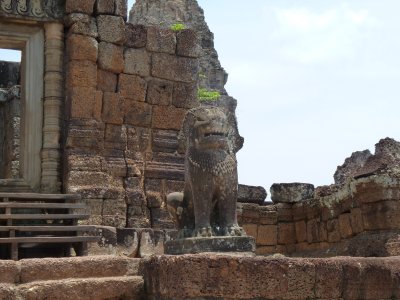 |
|
Plus those large lions again.
And the reversion to laterite. |
| |
|
|
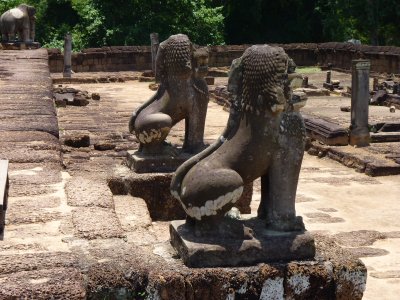 |
|
Couldn't resist the "lions". Very elegant. |
| |
|
|
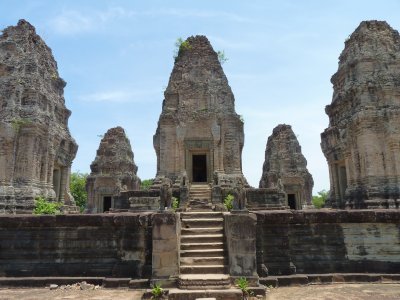 |
|
The pyramid was generally a more relaxed affair. A lot
lower than we've been exposed to previously (the legs are grateful). |
| |
|
|
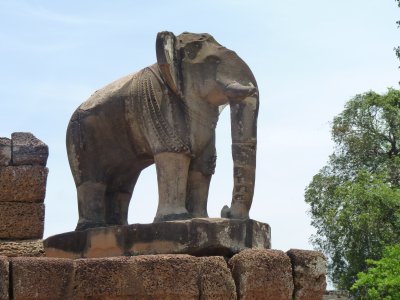 |
|
And that very elegant elephant. |
| |
|
|
 |
|
We will get to the end of these confounded temples.
Getting a bit dehydrated, despite the gallons of water we've drunk.
This is Ta Som.
Another flat temple. This is the passage through the middle. |
| |
|
|
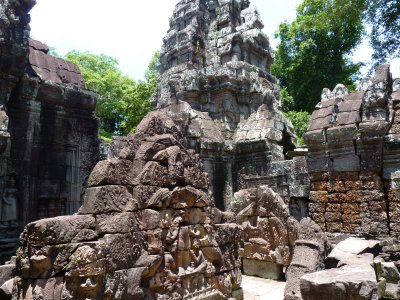 |
|
These lintels have been assembled on the ground, presumably
where they fell.
All a bit like a 3D jigsaw puzzle with no picture and a few bits
missing. |
| |
|
|
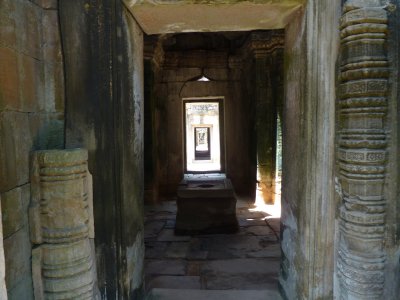 |
|
Buddha was missing from the middle. |
| |
|
|
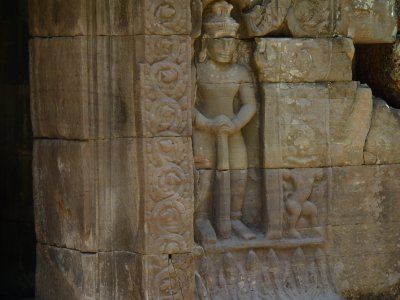 |
|
But the guy with the baseball bat was still there. |
| |
|
|
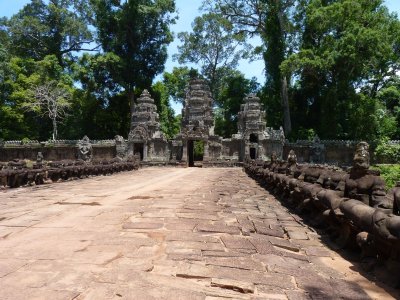 |
|
At Preah Khan there's another causeway. The balustrade is
in the best condition we've seen. |
| |
|
|
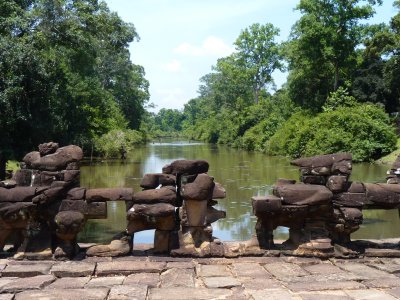 |
|
In the distance there are some locals fishing in the moat.
At the outer reaches of the Angkor area there are villages, rice
growing, and normal life.
The government have a policy of no new house building so as the young
grow up they are having to move out of the area.
We presume its one more step humane from simply clearing people out.
|
| |
|
|
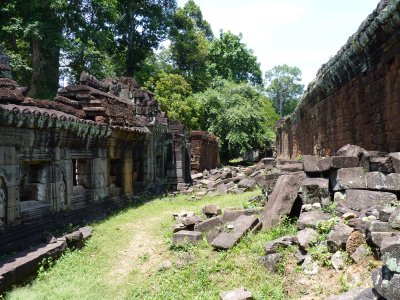 |
|
Not so well restored with lots of fallen masonry, exposed laterite, and fallen
roofs.
|
| |
|
|
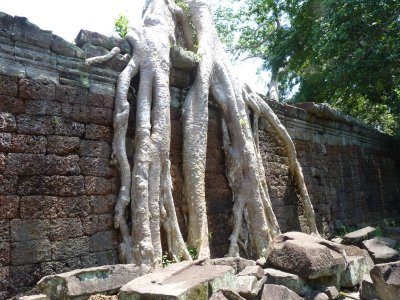 |
|
And the odd tree. |
| |
|
|
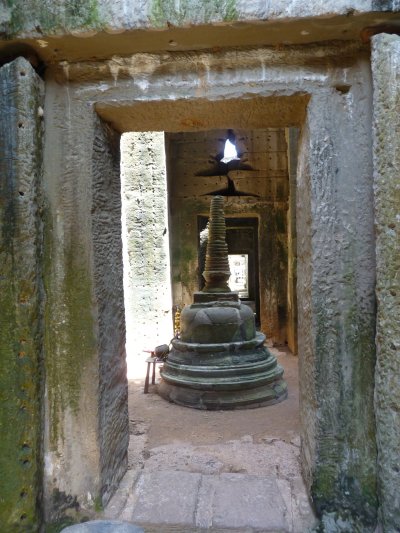 |
|
In the center of Preah Khan was a stupa.
We have no idea of the significance. |
| |
|
|
 |
|
This temple was much more compact than we've seen
previously. And flat of course! |
| |
|
|
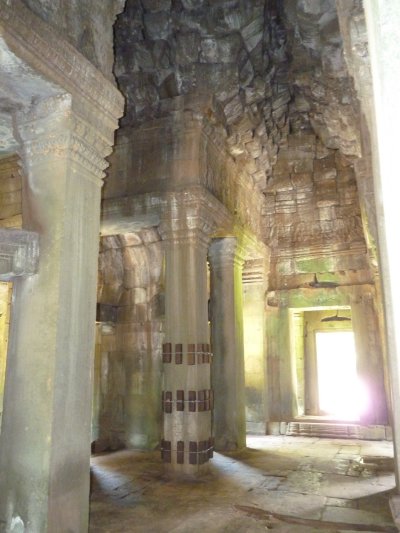 |
|
Having said that we were surprised at encountering the
largest internal space so far.
It was like a small cruciform cathedral. Probably at the limit of the
corbelled arch with associated support beyond the columns. |
| |
|
|
 |
|
We found an example of one of those freizes we saw
assembled on the ground at a previous temple. Decoration above a door. |
| |
|
|
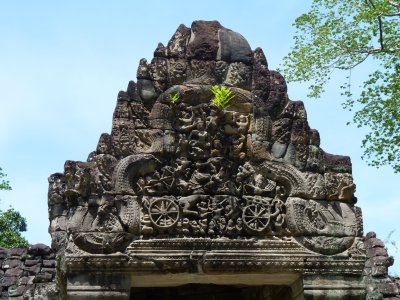 |
|
Very ornate. |
| |
|
|
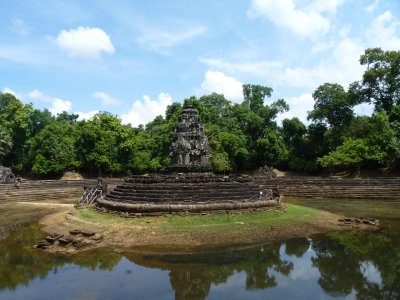 |
|
We missed Neak Pean the first time. Found it on the way
back.
Its really the odd one out. Circular, and part of a reservoir complex. |
| |
|
|
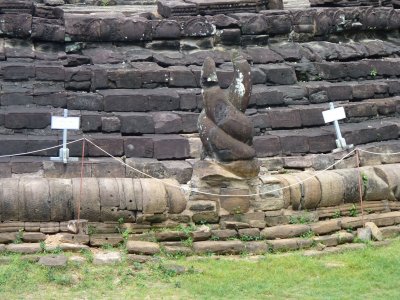 |
|
The name relates to the serpents in various forms around
the temple. |
| |
|
|
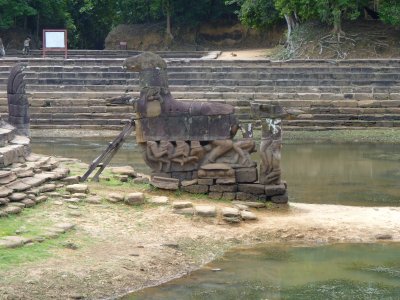 |
|
But no mention of what we christened the trojan horse. |
| |
|
|
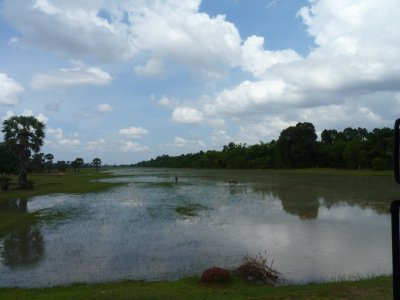 |
|
As we drove home we noticed the expanses of rice paddies.
We'd like to think that some of the irrigation channels were the same
as used 1000 years ago.
We did notice a few concrete structures with steel gates to be would up
and down. |
| |
|
|
 |
|
The gates are like we see in irrigation systems in Aus.
The water buffalo in rice paddies seem to conjure up a sense of being
in Asia. |
| |
|
|
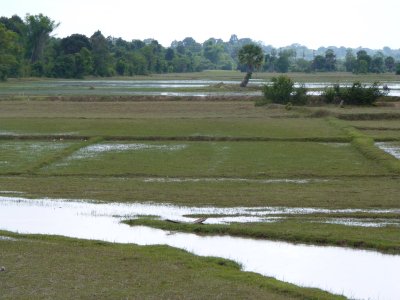 |
|
The rice paddies here were quite small. Possibly reflecting
the number of crops (at least 3) each year.
Elsewhere we have seen much larger. |
| |
|
|
| Seam Reap to Kep |
|
Week 5 22nd - 25th May 2011 |
|
|
|






























